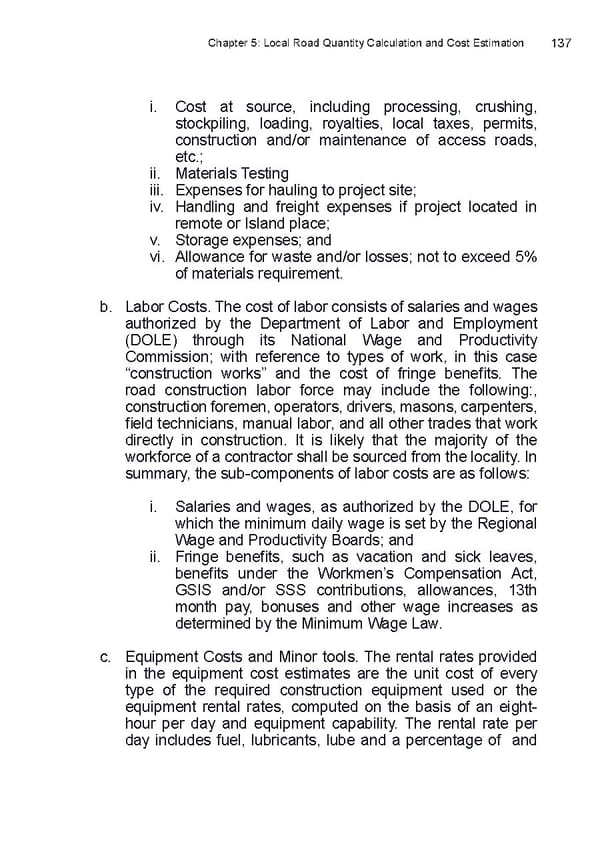Chapter 5: Local Road Quantity Calculation and Cost Estimation 137 i. Cost at source, including processing, crushing, stockpiling, loading, royalties, local taxes, permits, construction and/or maintenance of access roads, etc.; ii. Materials Testing iii. Expenses for hauling to project site; iv. Handling and freight expenses if project located in remote or Island place; v. Storage expenses; and vi. Allowance for waste and/or losses; not to exceed 5% of materials requirement. b. Labor Costs. The cost of labor consists of salaries and wages authorized by the Department of Labor and Employment (DOLE) through its National Wage and Productivity Commission; with reference to types of work, in this case “construction works” and the cost of fringe benefits. The road construction labor force may include the following:, construction foremen, operators, drivers, masons, carpenters, field technicians, manual labor, and all other trades that work directly in construction. It is likely that the majority of the workforce of a contractor shall be sourced from the locality. In summary, the sub-components of labor costs are as follows: i. Salaries and wages, as authorized by the DOLE, for which the minimum daily wage is set by the Regional Wage and Productivity Boards; and ii. Fringe benefits, such as vacation and sick leaves, benefits under the Workmen’s Compensation Act, GSIS and/or SSS contributions, allowances, 13th month pay, bonuses and other wage increases as determined by the Minimum Wage Law. c. Equipment Costs and Minor tools. The rental rates provided in the equipment cost estimates are the unit cost of every type of the required construction equipment used or the equipment rental rates, computed on the basis of an eight- hour per day and equipment capability. The rental rate per day includes fuel, lubricants, lube and a percentage of and
 Local Road Management Manual Page 137 Page 139
Local Road Management Manual Page 137 Page 139